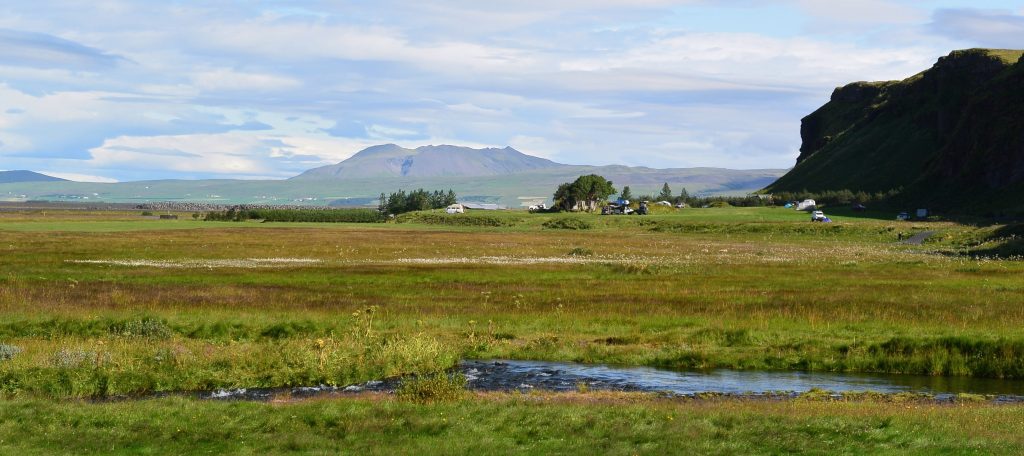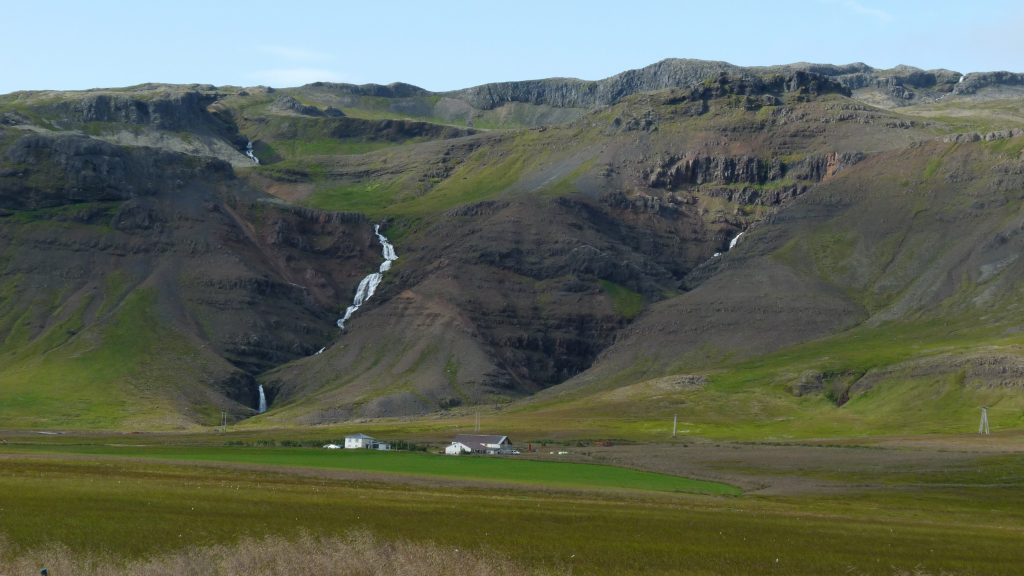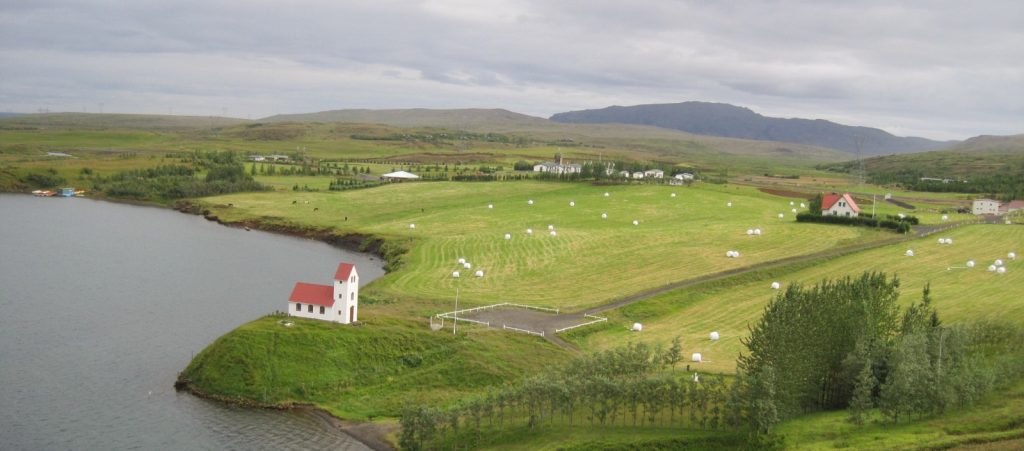Iceland is a geographical wonder – a land of glaciers and volcanoes perched on the edge of the Arctic Circle. It sits astride the Mid-Atlantic Ridge and is one of the most volcanically-active places on earth. It holds particular fascination for geographers and two of us ( Ruth Swetnam & Fiona Tweed) are leaving Stoke on the 20th of June to undertake fieldwork in this fascinating place as a key part of our Vice Chancellor’s REF Support Scheme grant.

An Icelandic landscape view in summer (photograph Fiona Tweed)
Why Iceland? Why now?
Strangely enough, the story actually starts closer to home just over the border into Wales. Ruth has recently developed a new method to measure landscape quality for the Welsh Government and the landscape research team at Staffordshire University has classified nearly 300 sites across Wales. This Visual Quality Index (VQI), is based on a measure of all the things people love about Wales: the mountains, water, trees, flowers, stone walls, even the livestock. The big question is “How transferable is this approach?” If we use a similar method to evaluate landscapes in Iceland, does it capture those things that are important to the Icelandic view; if not, what needs to be tailored?

Western Iceland – waterfalls and gorges (photograph Fiona Tweed)
Why does this work matter?
Iceland is undergoing huge physical and economic change. It is experiencing rapid deglaciation with retreating glaciers changing the shape and appearance of the land, the flows of its rivers and the nature of its coastline. Invasive plants are also establishing and the nature of the landscape view is altering. When glaciers shrink they leave behind a rather jumbled mix of rock, dirty ice and sediment – changing the colour of the view from ice-white to a mix of green, grey, brown and black. It is happening rapidly and the unique visual character of Iceland is under threat. In amongst all of this physical change, Iceland is also experiencing a huge boom in visitors. Numbers have risen from just over 300,000 in 2000 to an eye-watering 1.3 million visitors in 2015, all on an island with a population of only 332000. This is placing strain on infrastructure and tourist “facilities” are beginning to pop up in previously unspoilt areas. What is the visual impact of a shipping container café in a beautiful landscape? Icelanders are concerned – we are going to see if our methods are of potential help in monitoring this rapid change. Maybe Wales with its long history of managing tourists in wild landscapes has something to share?

Typical Icelandic rural scene with grazing and church (photograph Fiona Tweed)
Our research will entail visiting upwards of 30 locations from one side of the island to the other to evaluate visual landscape quality. It will entail a lot of hard driving on gravel roads, long days and some different and interesting accommodation. We will be taking unique 360⁰ photographs, making audio and visual recordings and evaluating landscapes using a checklist of quality indicators. We will be keeping research diaries to evaluate the experiences of an Iceland newbie (Ruth) with an Iceland expert (Fiona) to consider the differences as well as interacting with research contacts at The University of Reykjavík. Our aim is to tweet and to continue this blog as we explore … watch this space.

